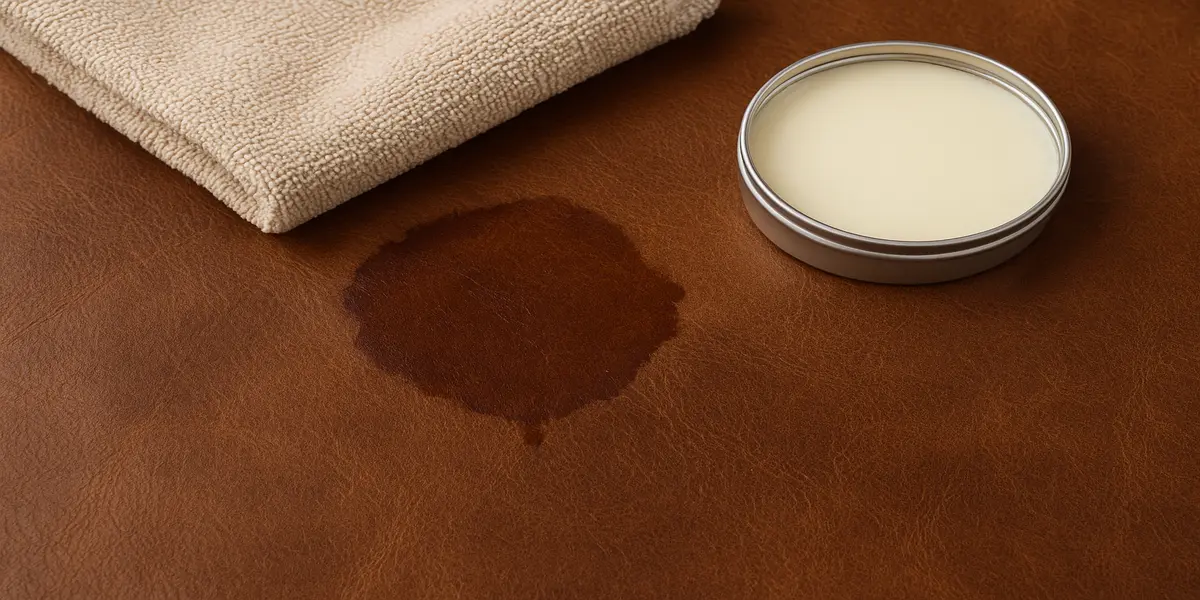How to Fix Water Damage on Leather | Leather Care Tips
Do you have a problem with watermarks in leather products? In addition to destroying the appearance of leather, water stains have other effects that include changing its texture and strength. The reason why many people do not use leather cleaners is that they fear that they would ruin the surface. The upshot is that you can recondition your leather products using basic methods, without the use of harsh chemicals, and bring them back to their original condition.
This blog will teach you some useful secrets suggested by the bond cleaning services to get water stains out of leather. You will also learn how to retain the softness, shine, and life of leather as well as how to prevent future damage to leather.
1. How to Figure out Water Stains on Leather?
Water stains are found as a result of the liquid being pooled in the pores of leather. Leather is porous; therefore, even a bit of moisture can be seen to leave behind marks. These stains can become dark or even ring with time, particularly on untreated leather. Various leather materials are also sensitive to water. Aniline leather takes in water quickly, whereas top-grain leather might not soak up water. The first step is to understand the reaction of water with your leather.
The stains can be treated immediately, and less damage is caused permanently. It is beneficial to keep the leather hydrated to keep the water off and to avoid the development of stains. Regular hydration also protects against new stains—something even recommended by cleaning professionals.
2. Blot the Water Immediately
The initial action in the treatment of a water stain is that of speed. Blot the affected area with a soft dry cloth. Do not rub this will distribute the moisture and cause the stain to be even greater. Repeat blotting until the leather is almost dry in the case of deeper spills. It can be left to residual fibers using paper towels, so it is better to use microfiber or cotton. Such a basic action will help avoid the water being absorbed by the pores of the leather, which will minimize the chances of rings and discoloration. The snap-on maintenance of the look and feel of your leather products is ensured by taking immediate action.
3. Use a Leather Conditioner
Leather conditioner replenishes water and narrows down water spots. Place a little conditioner on a soft cloth. Rub it in the stained part in a circular manner. And leave it to soak up a few hours. Conditioners assist in keeping leather flexible, and cracking is avoided. Frequent application of a conditioner also creates a shielding layer that minimizes the effect of small spills.
4. Ensure Leather Dries Correctly
Hairdryer or direct heat should never be used, as this cracks the leather. Rather, leave it to dry in a cool, airy area. Towels should also be used to place under cushions to experience additional moisture when dealing with bigger items such as sofas. As it is drying, reform the leather softly in case it is deformed. Fading is prevented by keeping the leather out of the sun. Drying of leather is equally significant as the removal of the stains, since failure to dry properly can aggravate the look and feel of leather.
Conclusion
Stains on leather include water, which can be handled. With time, timing, and responding to situations, relying on a leather conditioner, natural solutions such as vinegar and water, and proper drying of materials, you are able to restore the appearance of your leather. Regular conditioning and protection of leather helps to keep it deep bond clean in the future. With these cleaning tips, your investment will not be wasted as jackets, bags, furniture, and accessories will be in good shape. Leather is not only durable and appealing, but also healthy. After regular care, your leather products are years away from stains like water, dirt, and softness.
